Kinmen.Jinhu Township
Haiyin Temple
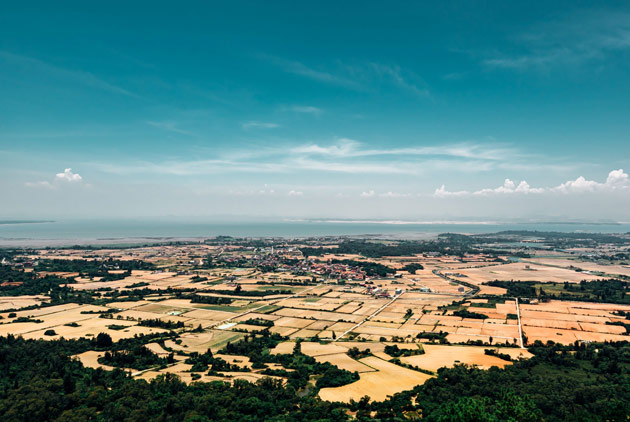
Source:Chen Chien-hao
This ancient temple and the pure land located at Kinmen’s highest point has, from humble origins, survived and thrived through hardships and turmoil over the long years, through the Southern Song, Yuan, Ming, and Qing dynasties. During this period it underwent many repairs and expansions. Though the structure’s external appearance and surroundings have seen myriad changes, what has never changed is its irreplaceable lofty status in the hearts of Kinmen’s people.
Views
Haiyin Temple
By Kao Chia-lingSponsored Content
Ancient Temple on a Small Island – A Story that Began Seven Centuries Ago
“In the past, to reach Haiyin Temple residents who lived further away had to first travel along the coastline, on foot, donkey, or horse, taking the greater part of a day.” Master Xing Hai is the temple’s current abbot, the eighth since the Qing Dynasty’s Qianlong emperor period, for which there is comparatively complete documentation. Haiyin Temple has a truly long history, dating back to the Southern Song Dynasty’s Xianchun period (1265~1274).
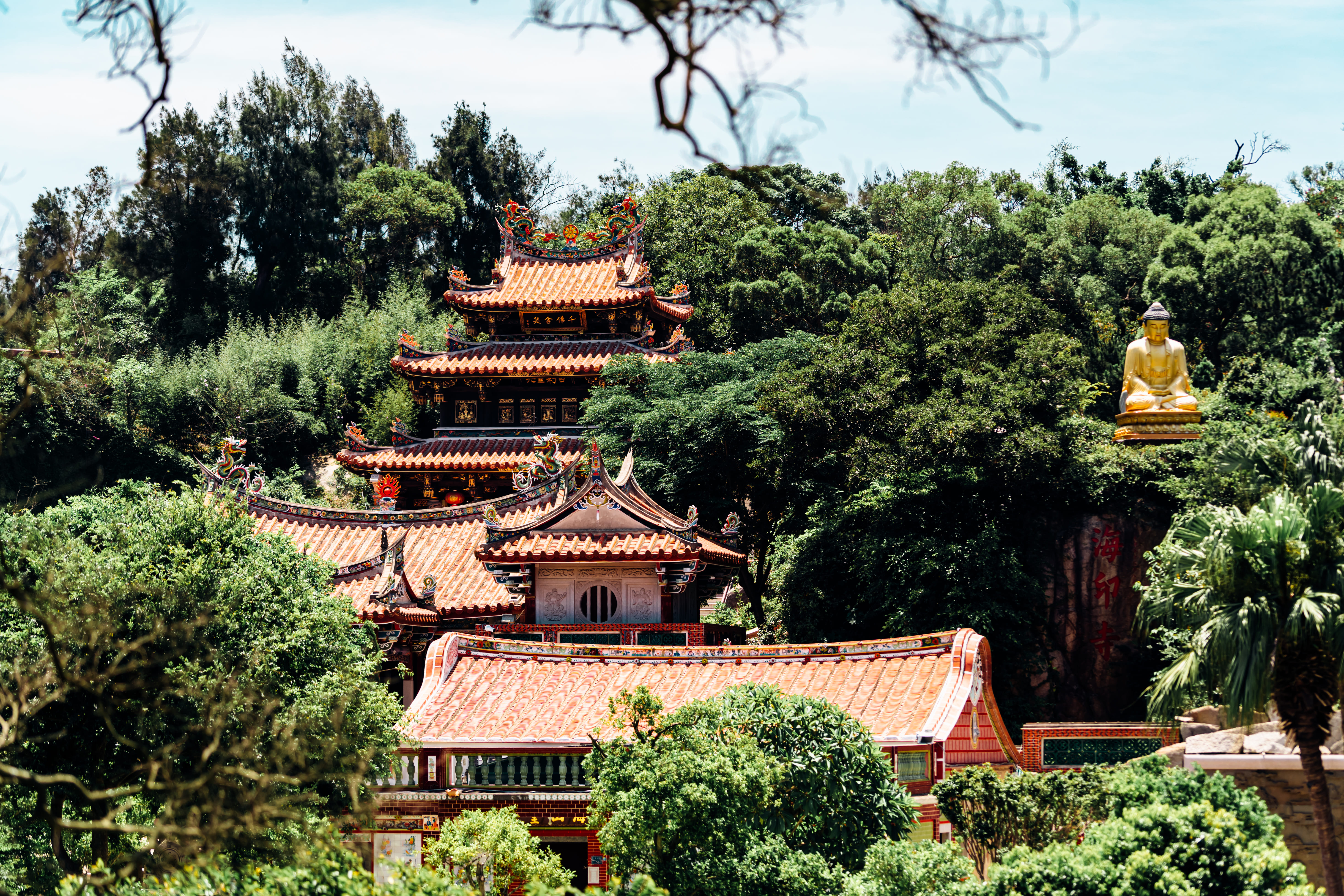
According to the “Kinmen County Chronicles.People’s History,” Haiyin Temple’s predecessor was a Taoist temple dedicated to the Tongyuan Immortal, a sea god, not a Buddhist temple. The Guanyin Bodhisattva was enshrined later. As for when and under what circumstance the change from Taoist to Buddhist temple was made, Yang Tien-hou, an adjunct assistant professor at the National Quemoy University’s Center for Generation Education, who has long studied Kinmen culture and history, states: “According to the summary of repairs, even after sifting through the information from the start of the Ming Dynasty, the exact time currently remains unclear. What can at least be confirmed is that there is documentation that it had become a Buddhist temple as of the 28th year of the Ming Dynasty’s Wanli emperor (1600). Indications are that worship flourished gradually, and with the emergence of the legend of the Guanyin Bodhisattva’s physical appearance, the temple evolved into what it is today.”
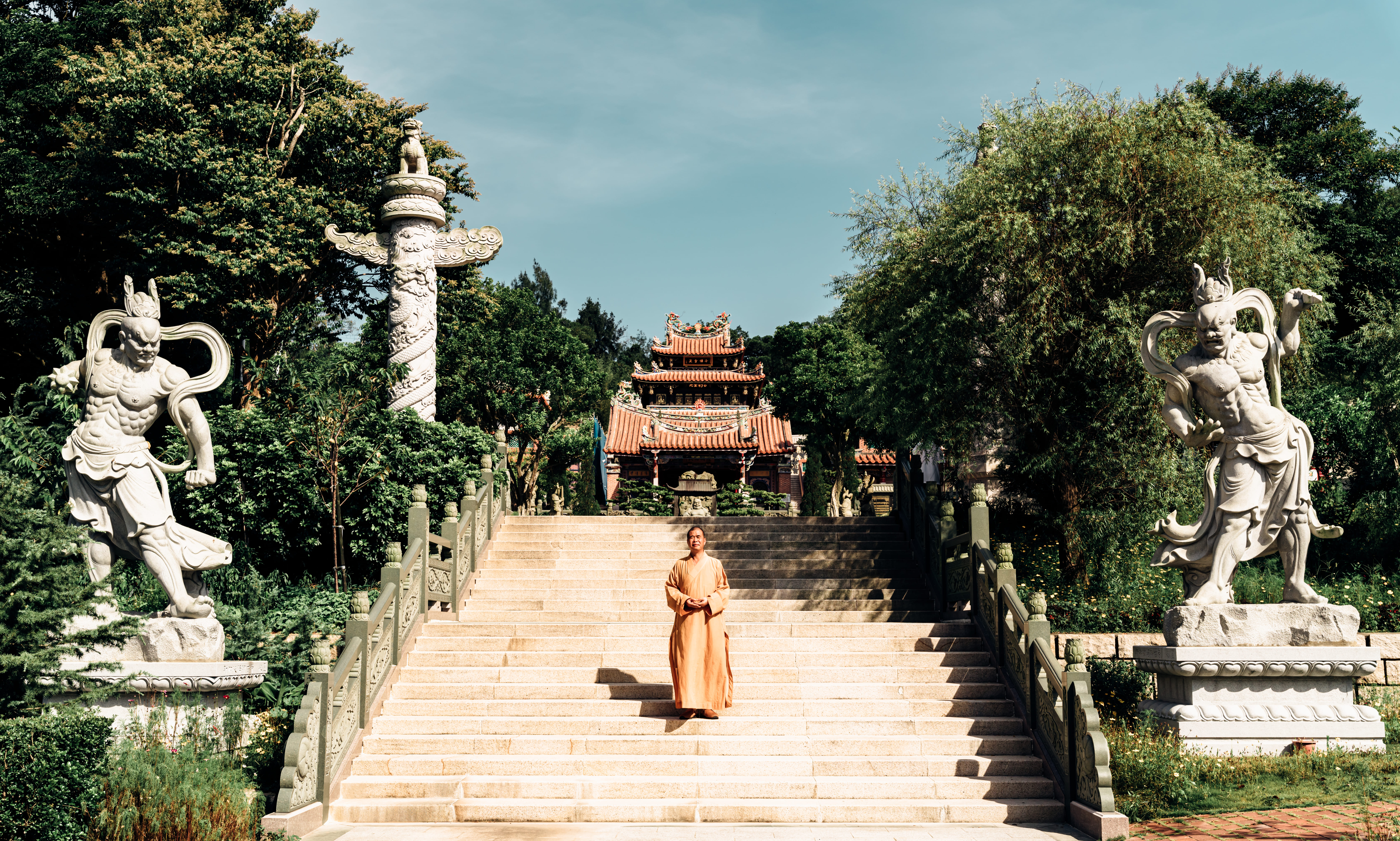
Enduring 700 years of wind, rain, and frost, logically speaking it should have undergone countless repairs. However, clues are only available from records from the Ming Dynasty and the Republic of China era. In more than 200 years of records from the Qing Dynasty, reference to Haiyin Temple’s repairs is a blank.
Kinmen suffered severe damage in the August 23 Artillery Battle of 1958. Inevitably, Haiyin Temple was impacted. Its roof and structure were severely damaged. The temple as it appears today is the result of renovations and additions carried out one after another from 1960 through 2013.
Spanning the Ages, surviving the ravages of war, Haiyin Temple can be called a historical treasure.
Grand Assemblies on Tiangong’s Birthday
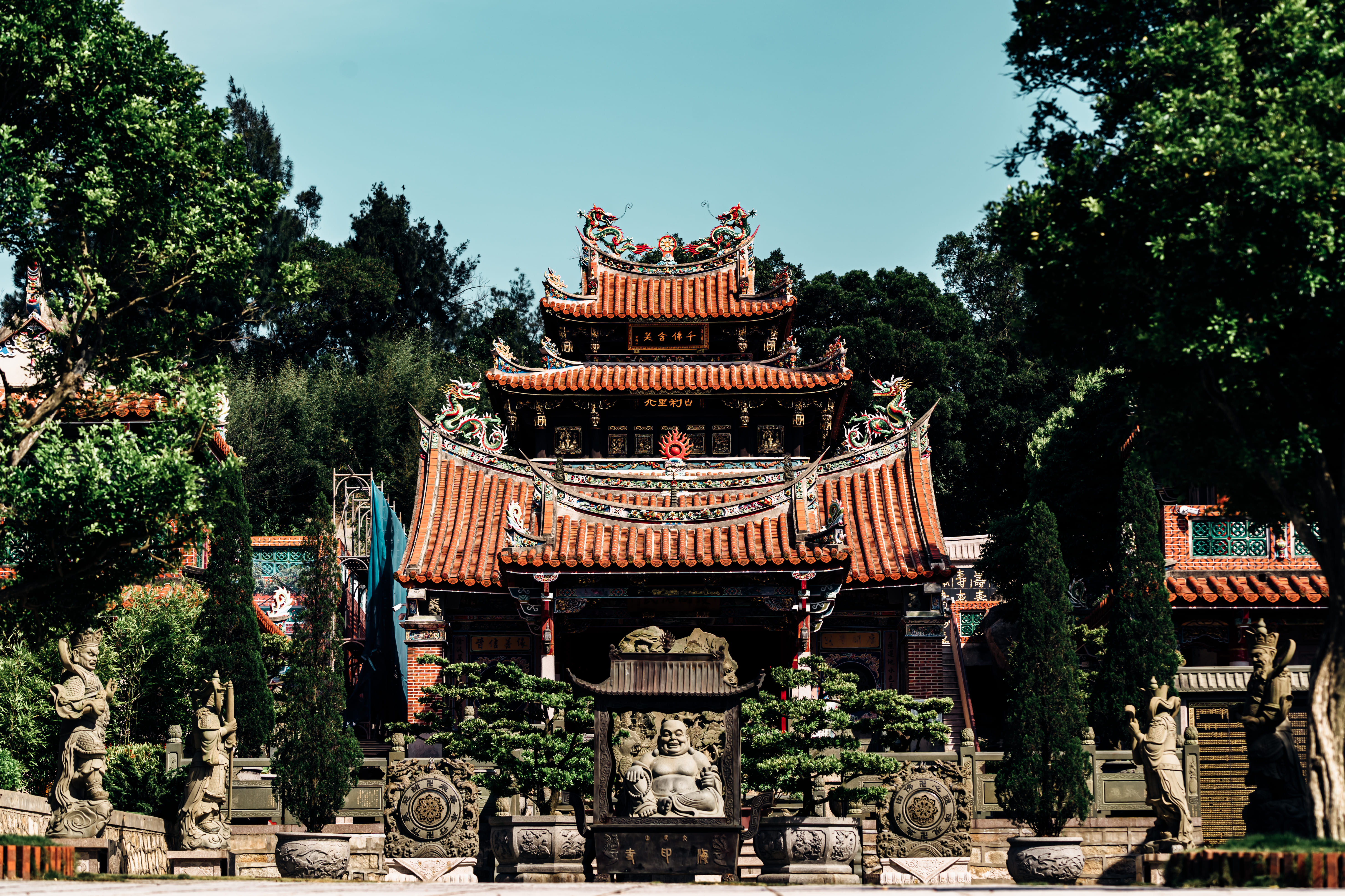
Looking back to Mount Taiwu during the war zone administration period and military control, in the early years the temple was open just one day a year for resident believers to ascend the mountain to worship. Restrictions were thereafter gradually eased, and after the war zone administration period was ended in 1992, pilgrimage visits for Buddhist worship on the mountain have gradually flourished once more.
The temple’s busiest day each year is the ninth day of the first month in the lunar calendar, the birthday of Tiangong (lit. Heaven God; the Jade Emperor), called the “Offering to Celestial Guardians Dharma Assembly.” Smiling in unison, Master Xing Hai and husband/wife duo Yang Tien-hou and Lin Li-kuan state: “This is a part of the common memories of the people in Kinmen.” It is like a field-trip day for the whole island, with males and females of all ages taking traditional Tiangong cakes to the mountain as worship offerings, praying for peace and health in the year to come. Yang Tien-hou recalls: “I used to head to the beach at Lucuo Village on the way home after coming off the mountain, to watch the horse races.” Thinking back, he says, the day was filled with excitement.
Five Scenic Wonders – Praise from a Ming Dynasty General
Among the “12 wonders of Mount Taiwu”, Haiyin Temple is the home to five.
Haiyin Temple’s original name was Taiwu Temple. In its early years the Shimen Guan (“Stone Gate Pass”) was erected for temple defense. It is understood that this was Taiwu Temple’s main gate during the Ming Dynasty. During that time it is likely that, for defense reasons, the adjoining walls were thicker and higher. On the gate’s lintel are characters that read “first among island peaks,” reference to prose written by Ming Dynasty Confucian scholar-general Lu Ruo-teng in praise of Mount Taiwu: “Wu (Kinmen) is the most famous island in the sea, while Mount Taiwu is the best-known of all the island peaks.”
The crystal-clear Zhanyue (“Dipping Moon”) Pond before Guanyin Hall is a freely self-adjusting pool. It never dries up during dry periods, nor does it overflow during rainy periods. The Xiangji An Stone, also called the Yuji An Stone, is located directly in front of Haiyin Temple’s aligned halls. “Yu” means jade; it was named for its resemblance to an imperial jade seal. The Gushi (“Ancient Rock”) Chamber, located at the uppermost point of the temple complex, is a natural rock cave where it is thought high monks once practiced meditation.
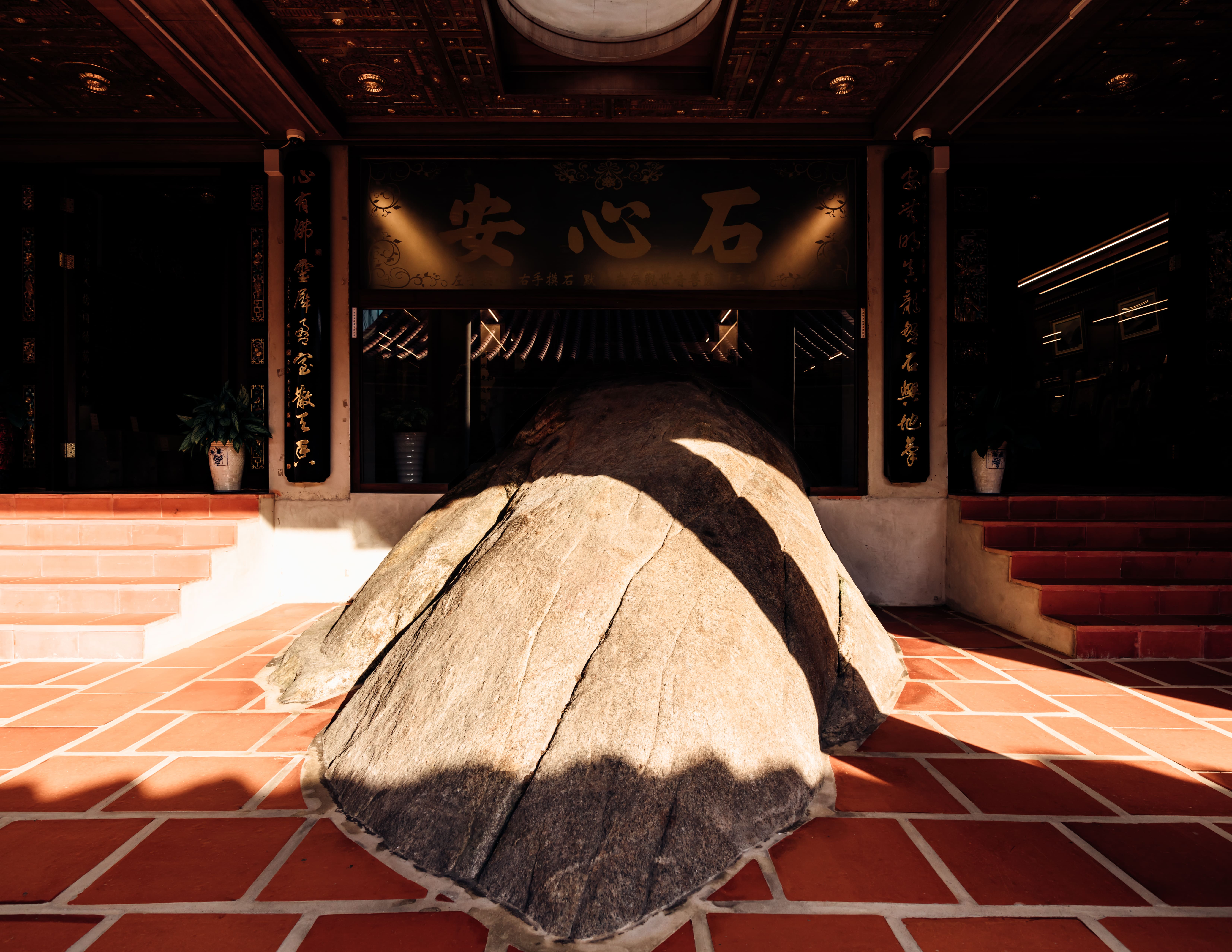
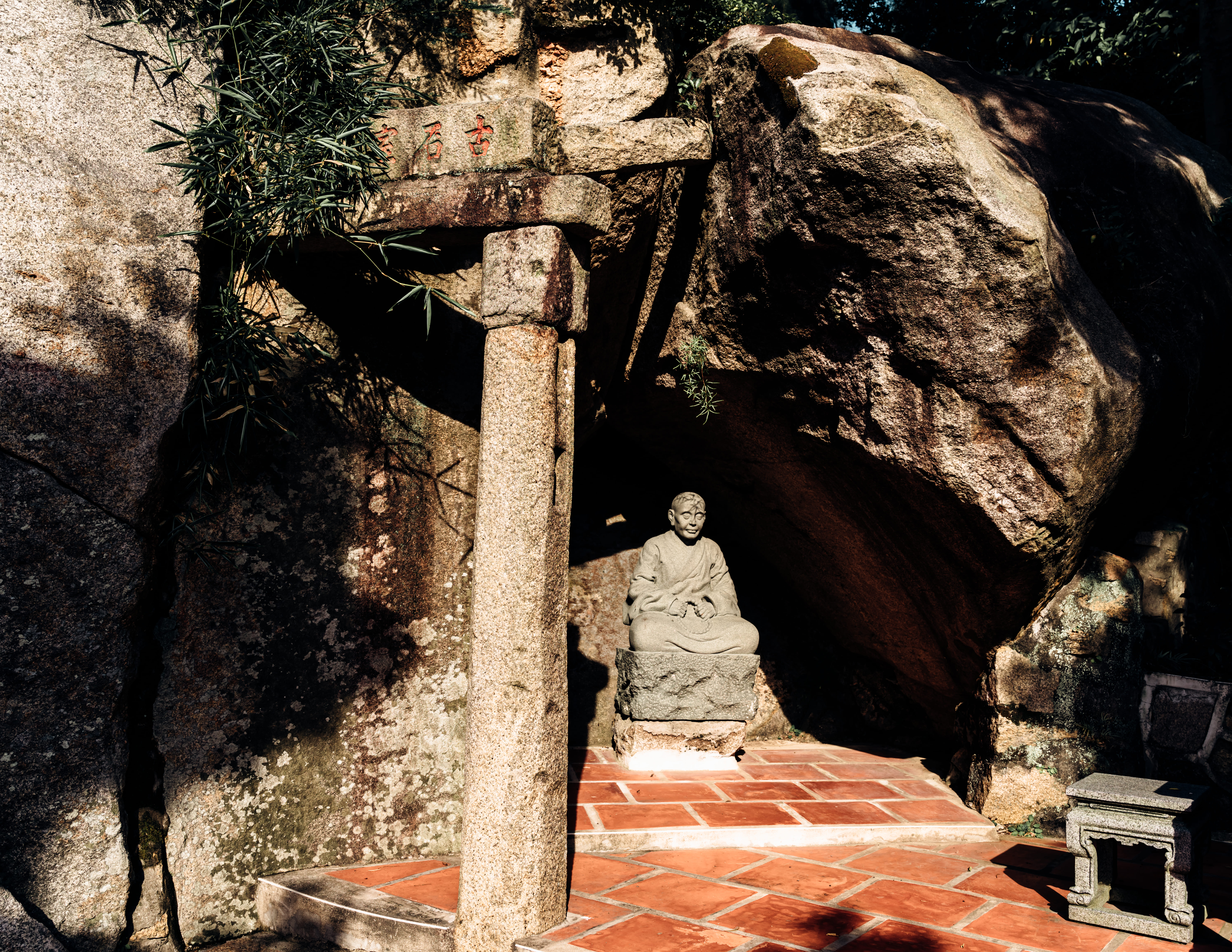
While Visiting Mount Taiwu: Traverse the “Small Silk Roads” of Kinmen
Immortals bring a mountain’s fame, not its height. For the people of Kinmen, Mount Taiwu is a sacred mountain and a spiritual mountain. It is also the road that must be traversed to visit Haiyin Temple.
In days long past when transportation was not convenient, north and south of the mountain and in the wider areas of the island east and west, the various villages surrounding Mount Taiwu all had trails leading up the mountainside. Tracks and trails were people’s pathways to the outside world, says Sun Li-ting, an interpreter with the Kinmen National Park Administration. “Though in days past the routes up the mountain were not as well-made as they are today, they provided connections in all directions, and facilitated access up the mountain for residents to worship at the temple and to engage in commercial exchanges between settlements.”
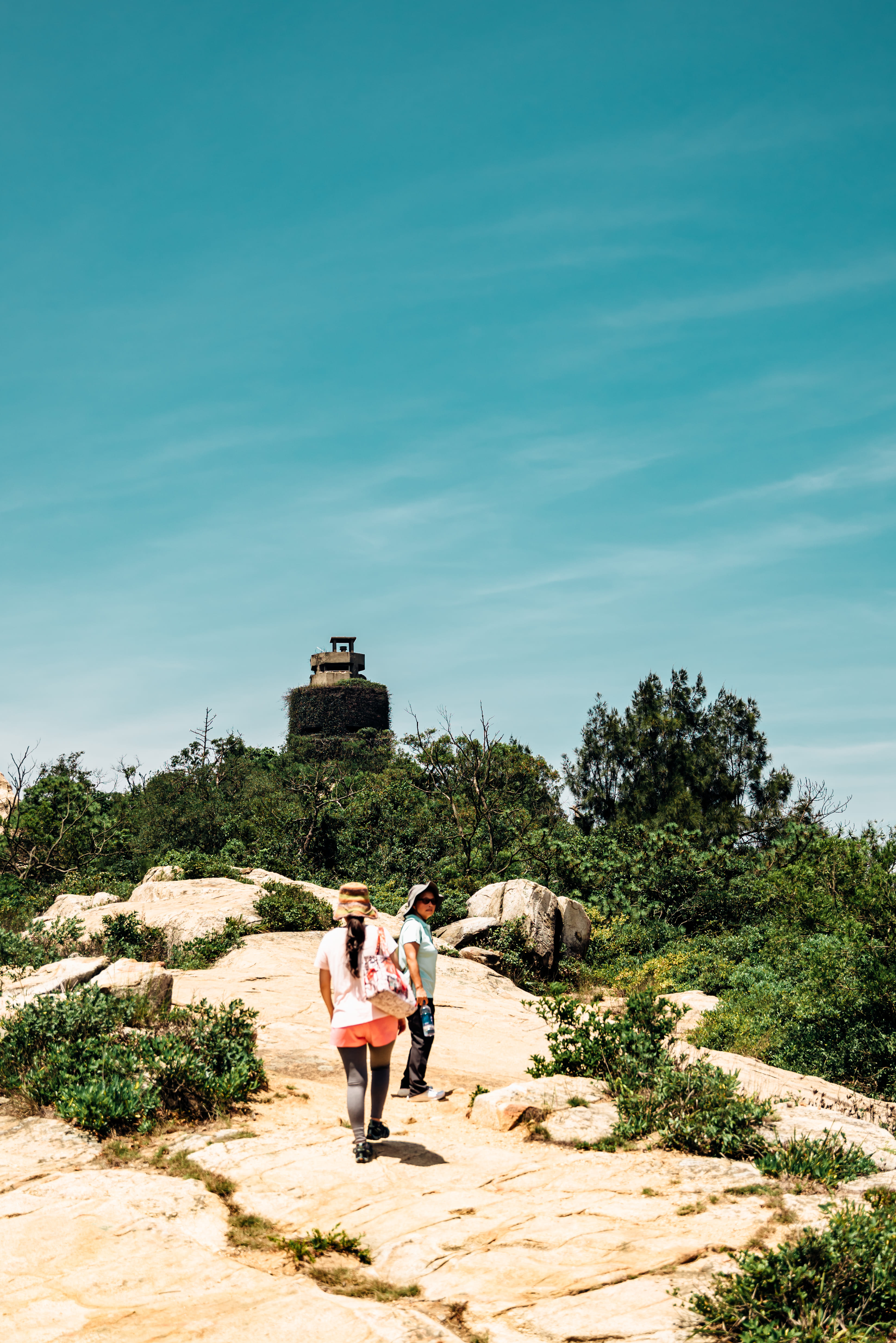
In the modern era, Kinmen became a battlefield in the confrontation between the two sides of the Taiwan Strait. Mount Taiwu, with its excellent overlook in all directions, was included in the military control zone. Most of yesteryear’s trails have been abandoned, with just four now remaining: Yuzhang Road, Pingtung Road Section, Doumen Original Mountain Road, and Caicuo Historic Trail.
Among these the Caicuo Historic Trail, which is also called the Tofu Ancient Trail, was in the past used for communication between two large settlements, Shamei in Jinsha Township and Shanwai in Jinhu Township. It was a key transportation artery for trading business. With a history spanning about 700 years, the ancient route is imbued with special meaning.
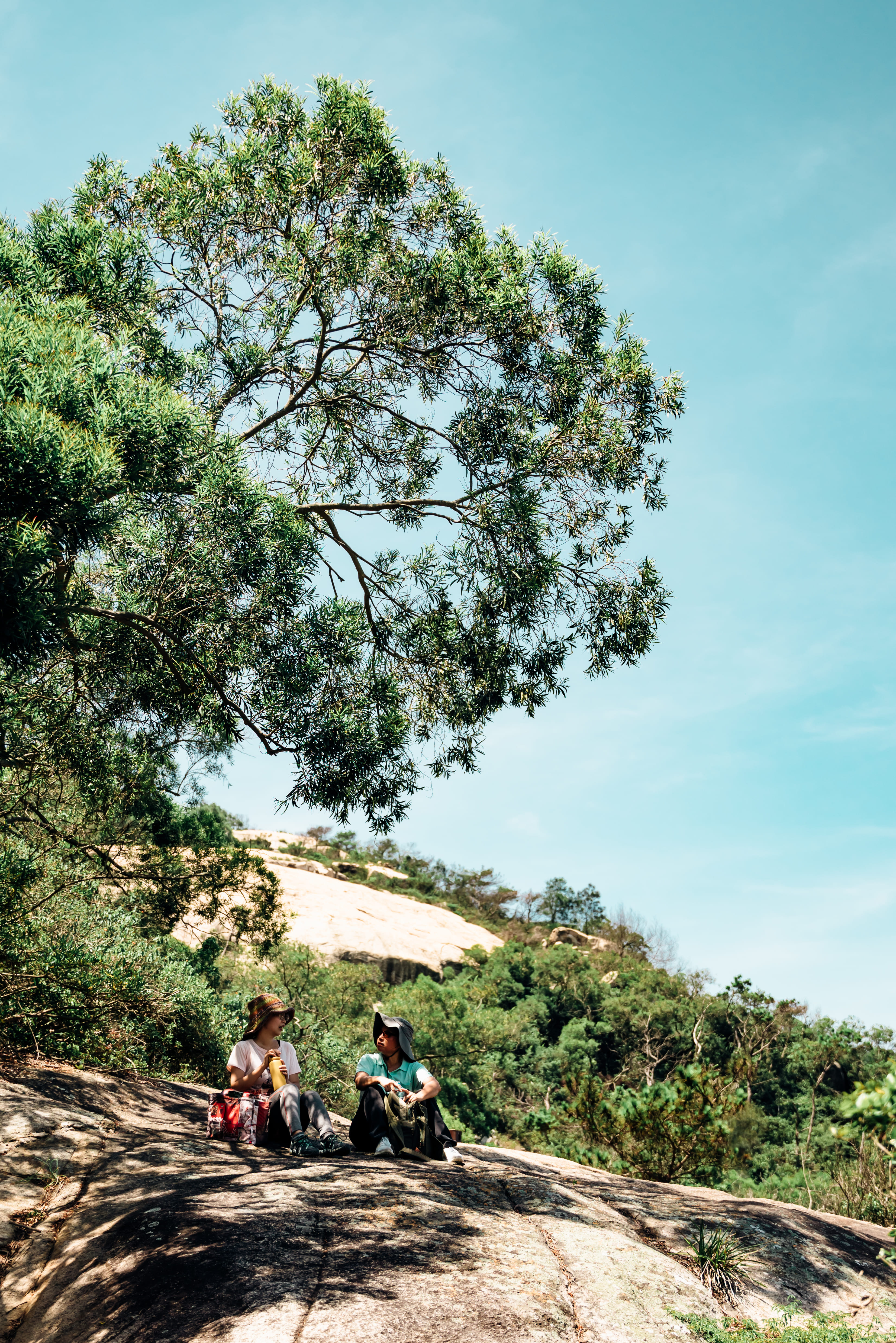
The most compelling attraction of this trail are the thrilling island panoramas, taken in from a bird’s-eye view. Sitting down at one of the viewing platforms, rest your legs in the cooling breezes. Laid out before your eyes are Kinmen’s fields and beyond, the sea. If the sorghum and wheat crops are maturing, the precious sight of billowing grain fields can be enjoyed. Toward the end of the trail is another precious Kinmen sight to be harvested for one’s memories – the Place Where Koxinga Reviewed Military and Played Chess. This is a natural cave from which it is said the Ming Dynasty general Koxinga, who also had the title Prince of Yanping, once observed wartime troop operations.
Hikes are recommended in the early morning or later in the afternoon, to avoid the sun at its hottest. The mountain’s forest cover and breezes make the walking especially comfortable. And don’t forget to explore the plant life around your feet, such as the Shiny-Leaved Prickly Ash, Hopbush, and Box-Leaved Syzygium, all presenting scenery well worth stopping for on a Mount Taiwu trek.
Getting There・Haiyin Temple
Public transportation: Take the Kinmen Blue No. 1 bus to Taiwu Park, get off at the Taiwu Park stop, pass through the adjacent archway on Yuchang Road to find the trailhead, and head uphill to Haiyin Temple.
Self-drive: If renting a car at Shangyi Airport, proceed along Section 3, Huandao South Road., then along Section 4, Boyu Road toward Yuzhang Road. The mountain-ascent trailhead is found by the Yuzhang Road archway. From here, proceed on foot to Haiyin Temple.
Kinmen Mount Taiwu・Haiyin Temple
No. 1, Haiyinsi, Jinhu Township, Kinmen County 891, Taiwan
082-334703
Kinmen National Park
No. 460, Sec. 2, Boyu Rd., Jinning Township, Kinmen County 892, Taiwan
082-313100
Caicuo Tourist Information Station
Caicuo Historic Trailhead, Jinsha Township, Kinmen County 890, Taiwan
082-354246






